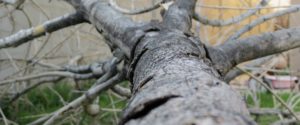There comes a time in each property owner’s life when they must make a decision about whether or not to remove a tree from their land. It is not always an easy choice, but there are some cases where it is the best option, especially if it’s necessary for the health and safety of your property.
Why Remove a Tree?
Dead, Dying or Diseased Tree
If your tree is sick or dying, it might be best to have it removed before it becomes a safety hazard. In addition, an unhealthy tree is also more susceptible to insect infestations, which can further weaken it and pose health risks to your family.
If a storm or other natural disaster has damaged your tree, it might need to be removed for safety reasons. A tree with a cracked trunk or is severely leaning is more likely to fall and cause damage.

SIGNS OF POOR TREE HEALTH
A few signs can indicate that your tree is not healthy and might need to be removed. If you notice any of the following, it’s a good idea to have your tree inspected:
BRANCHES THAT ARE DEAD OR DYING
CRACKS OR BREAKS IN THE TRUNK
LEANING TREES
MUSHROOMS OR OTHER FUNGI GROWING ON THE TREE
EXCESSIVE LEAF DROP
CANOPY THINNING
POORLY LOCATED TREES
If a tree is too close to power lines or other structures on your property, it might need to be removed. Trees close to power lines can pose a fire hazard, and those that are too close to your building or home may cause damage if they fall.
Trees can also sometimes get in the way of construction or other landscaping projects. If you’re planning on making changes to your property, removing a tree that’s in the way might be necessary.
OVERGROWN TREES
Trees that are too big for their location can pose safety hazards. They might grow into power lines or fall over and damage your property. If your tree is getting too large for its space, you might need to have it removed before it becomes a problem.
If tree roots are causing cracks in your foundation or sidewalks, they need to be removed. Not only is this a cosmetic issue, but it can also lead to more serious problems like water damage or even structural damage to your home.




BENEFITS OF TREE REMOVAL
While tree removal might not be your first choice, there are some benefits to doing so. In addition to the safety hazards that a tree can pose, removing a tree can also help with upgrading your property.
If you’re considering tree removal, consult with one of our tree experts. At Titan Tree Care, we can help assess the tree’s condition and give you informed advice on what to do next.
IMPROVE THE LOOK OF YOUR PROPERTY
MAKE IT EASIER TO CARE FOR YOUR OTHER PLANTS
INCREASE CURB APPEAL

SAFE TREE REMOVAL IN PHOENIX, AZ
With Titan Tree Care, our experienced tree service professionals can safely and efficiently remove your tree, no matter how big or small it might be. We also offer several other tree services to keep your property looking its best, including tree trimming, stump grinding, and tree planting. Contact us today to schedule a consultation.
If you're interested in our tree removal services, contact Titan Tree Care today. We'll be happy to answer any questions you have about our services or schedule a consultation at your convenience.







